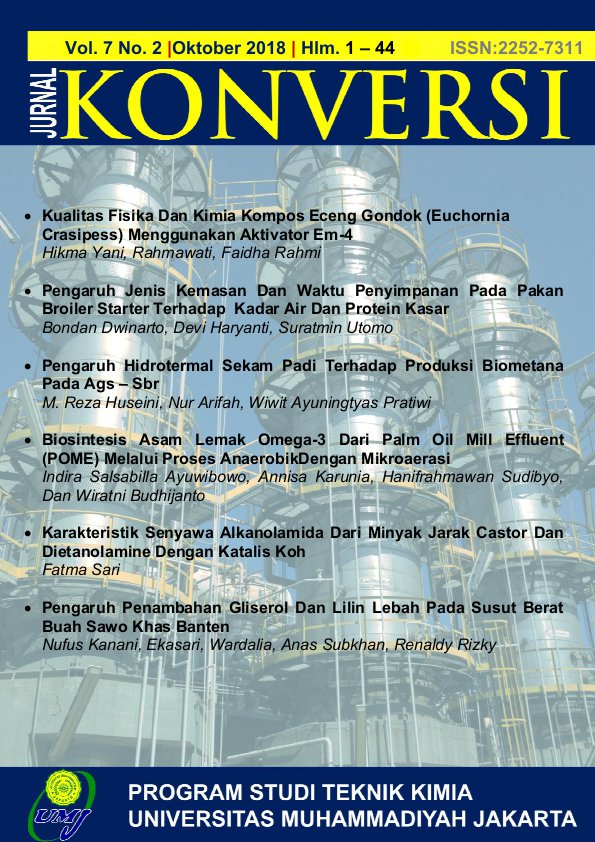KUALITAS FISIKA DAN KIMIA KOMPOS ECENG GONDOK (Euchornia crasipess) MENGGUNAKAN AKTIVATOR EM-4
Main Article Content
Abstract
ABSTRACT: This study aims to determine the quality of water hyacinth compost in physical and chemical properties. Water hyacinth is considered a weed that damages the aesthetics and aquatic environment in the Lut Tawar Lake tourist area. A solution is needed to overcome these problems, one of which is composting. In order for composting to take place faster, an EM-4 activator will be used which will give good quality. This research method uses one replicate with three treatments (K1 and K2 using EM-4, and K0 without EM-4). This study was conducted in two stages, that are the composting and characterization stages. The composting process is let runs for 60 days. Checking every 5 days is turn upside down and physical observation. After the composting process, is determined the pH, temperature and characterization. Characterization is done to determine the levels of C, N, P, K, Ca and Mg. The results of this study showed that EM-4 is effective for carbon (C), phosphorus (P) and calcium (Ca) grade. The grade of macro nutrient (C, N, P, K), micro nutrient (Ca) and temperature of water hyacinth compost are suitable with SNI.
Article Details
Issue
Section
Articles
Authors who publish with this journal agree to the following terms:
- Authors retain copyright and grant the journal right of first publication with the work simultaneously licensed under a Creative Commons Attribution License that allows others to share the work with an acknowledgement of the work's authorship and initial publication in this journal.
- Authors are able to enter into separate, additional contractual arrangements for the non-exclusive distribution of the journal's published version of the work (e.g., post it to an institutional repository or publish it in a book), with an acknowledgement of its initial publication in this journal.
- Authors are permitted and encouraged to post their work online (e.g., in institutional repositories or on their website) prior to and during the submission process, as it can lead to productive exchanges, as well as earlier and greater citation of published work (See The Effect of Open Access).
